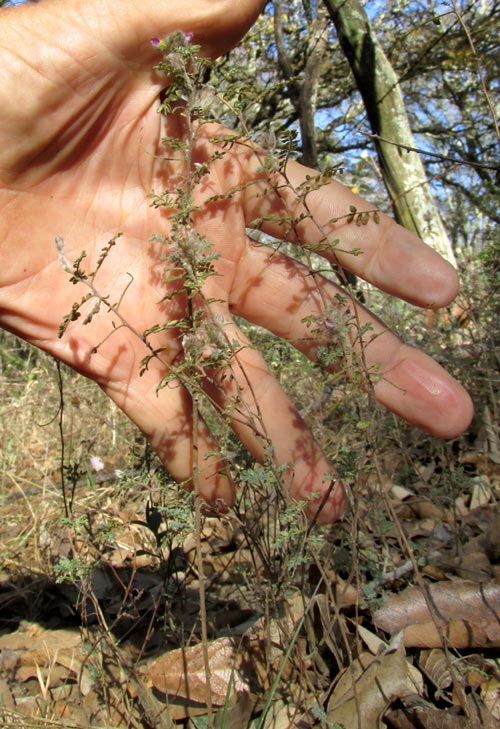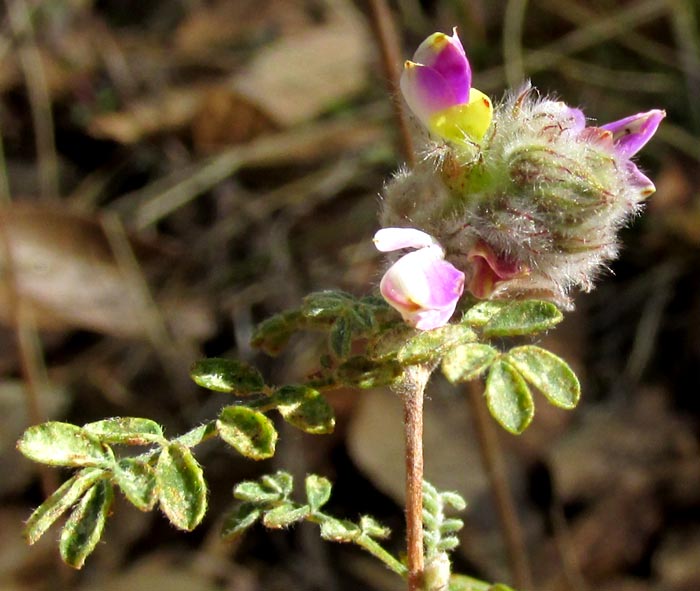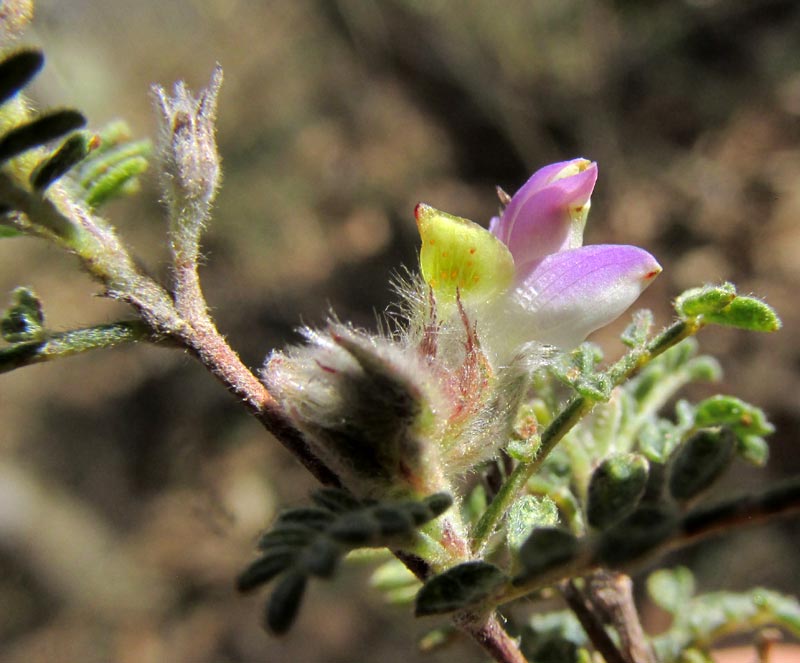Excerpts from Jim Conrad's
Naturalist Newsletter
entry from field notes dated April 16, 2022, taken in disturbed/reforesting borderline cloudforest within 1km of Valle de los Fantasmas, elevation ±2,320m (7600 ft), with limestone bedrock; about 40kms (24 miles), straight-line, ESE of San Luis Potosí, San Luis Potosí state, MÉXICO, (N22.06°, W100.62°)
OAKWOODS PRAIRIE CLOVER FLOWERING

Now during the driest part of the late dry season, the wiry, stiff-stemmed little plant shown above emerged from a thick layer of crispy-dry oak leaves. At the tips of the plant's upper branches, such tiny splashes of purple were displayed that I almost didn't notice them. Up close, the plant was clearly a member of the vast Bean Family, having typically pinnately compound leaves and fuzzy flowering heads like you might find on certain hairy clover species, shown below:

The leaves, typically with 9 leaflets, are particularly hairy and the flowering head is thick long, woolly hairs. In the above picture, something extraordinary is shown, a feature I hadn't noticed until the image was on the computer's screen. Atop the topmost, purplish flower, it appears that two stamens or stamen-like things (stamenodes) appear where stamens aren't supposed to be. It turns out that strange placement of petals and stamens is well known among this group of plants (genus Dalea). The phenomenon of "petal-stamen synorganization" has been well studied, as by Michelle McMahon and Larry Hufford, who in 2002 published a work entitled "Developmental morphology and structural homology of corolla-androecium synorganization in the tribe Amorphese (Fabaceae: Papilionoideae)."
A close-up of another flower, also displaying horn-like stamens or stamenoidia, appears below:

That picture shows another surprising feature I hadn't noticed: In the top, left corner of the image, on the stem opposite a leaf, a flower bud had developed. Normally in this group of plants most flowers are gathered in spikes, racemes or dense heads, so this single flower is unusual. One gets the impression that in this species the genes play loosely with their commands on how to put the plant together.
This is one of about 175 species of Bean Family plants known as prairie clovers. Sometimes in English it's known as the Oakwoods Prairie Clover, and from our plant's location in an oak woods, that's an appropriate name; it's DALEA VERSICOLOR. The species is distributed from Arizona in the US all the way through the arid uplands of Mexico to Guatemala. It's considered to be "polymorphic" -- assuming various forms. Several varieties have been designated and I'm unsure which this is, maybe var. glabrescens, known to occur in San Luis Potosí state.
Prairie clovers in general are regarded as excellent livestock forage, and good plants for controlling soil erosion. They are used in various traditional medicinal cures. Our Oakwoods Prairie Clover was featured in a 2004 study by Gil Belofsky and others, published with the title "Phenolic metabolites of Dalea versicolor that enhance antibiotic activity against model pathogenic bacteria." They found four compounds that "exhibited direct or synergistic activity toward" two human pathogens, and two compounds "demonstrating a mode of action consistent with inhibition" of another pathogen.